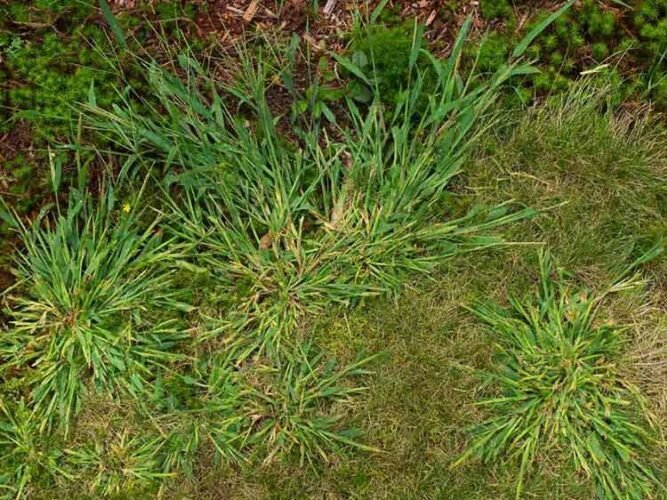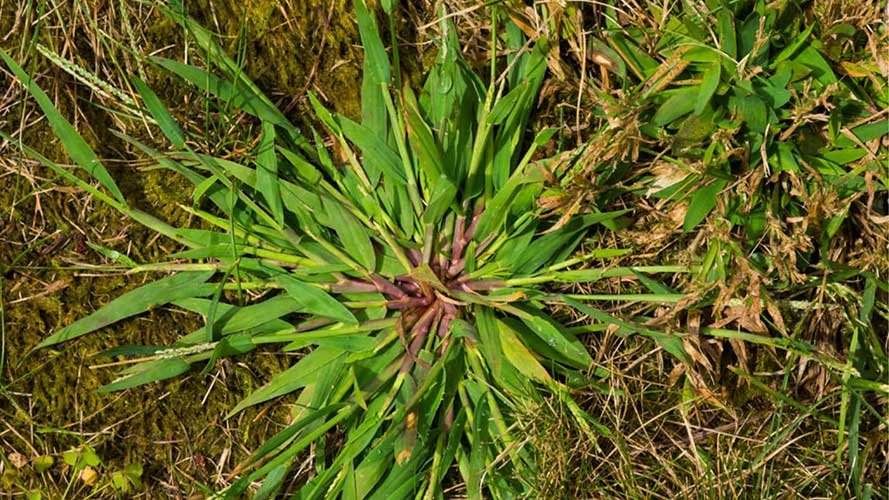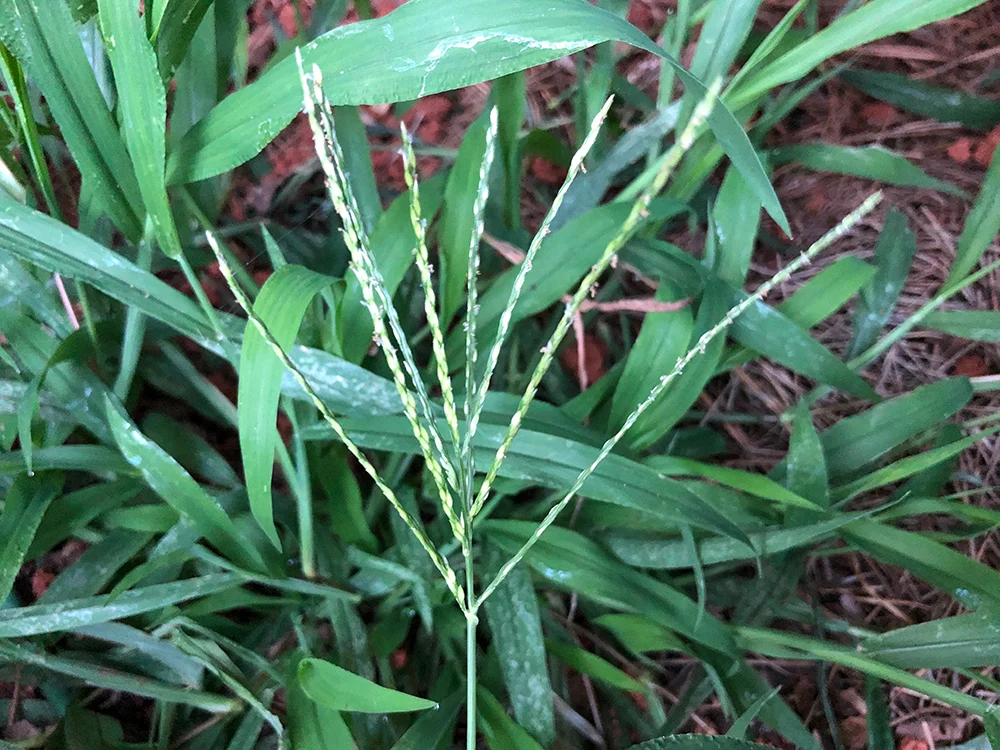Beautiful Plants For Your Interior
Hairy Crabgrass

Quick Weed Facts:
Shape: Narrow-leaf blades that can be slightly ‘curly’ along the margins, and have a hairy texture,
Colour: Dull but light green plant/leaves
Family: Poaceae Genus: Digitaria
Main Species: Hairy Crabgrass (Digitaria sanguinalis)
Other Names: Hairy Crabgrass, Hairy Finger Grass, Large Crabgrass, Crab Finger Grass, Purple Crabgrass
Most Active Growing: April – September
Weed Type: Annual
One of the common garden weeds in the UK, Hairy Crabgrass (Digitaria sanquinalis) is a low-growing grass that typically reaches a height of 6 – 12 in (15-30cm). It has slender, branching ‘stems’ that are hairless or sparsely hairy. The leaves are ‘flat’ and narrow, with pointed tips. They are typically green, but can sometimes have a reddish tinge. The edges of the leaves are lined with tiny hairs, which give the plant its name.
The flowers of Hairy Crabgrass (Digitaria sanquinalis) are small and inconspicuous and are borne in clusters on finger-like spikes. Hairy Crabgrass produces small, greenish-white flowers arranged in clusters along the stems. The flowers are not very showy, but they produce abundant seeds. The inflorescence consists of 7 to 10 digitately arranged spike-like branches.
Crabgrass prefers full sun to part sun and moist to dry soils. It is very adaptable and can tolerate a wide range of conditions. It is a common weed in lawns, gardens, fields, and waste areas.

Hairy Crabgrass: Easily Identifiable With Slender, Branching Stems That Are Hairy And Often ‘Purplish’ at The Base.
How is Hairy Crabgrass (Digitaria sanquinalis) Spread
Crabgrass is a prolific seed producer. Seeds are easily spread around a lawn for example, by wind and animals. A single plant can produce up to 150,000 seeds in a single season. The seeds are small and brown, and they can remain viable in the soil for several years.
Mowing your lawn at the correct height can also be important in preventing ‘Crabgrass’ from spreading. Keeping the grass at a height of 3.5 in (80mm) can provide ‘shade’ to the soil and keep it cooler, making it less hospitable for Crabgrass seeds to germinate.
These seeds typically germinate when the soil temperature is consistently above 60°F (15°C) for a week or more. Additionally, mowing the grass too short can result in thin, bare patches in the lawn, creating an ideal environment for Crabgrass to thrive.
Controlling Hairy Crabgrass – Weedkillers
If you have Hairy Crabgrass in your lawn or garden, there are several things you can do to control it. The best way to control ‘Crabgrass’ is to prevent it from germinating in the first place.
You can do this by applying a pre-emergent herbicide in late winter or early spring. However, if ‘Hairy’ Crabgrass has germinated, it can be controlled with a post-emergent herbicide.
It is important to read the label carefully though, and follow the instructions exactly. Herbicides can be harmful to desirable plants if not used properly.

Hairy Crabgrass: The ‘Inflorescence’ Consists of 7 to 10 Digitately Arranged Spike-Like Branches.
Control of Hairy Crabgrass – Organically
You can also control ‘Hairy Crabgrass’ organically in several ways. The ‘mechanical’ method is of course the ‘hand-pulling’ method of weed control. This is most effective when the weeds are young and small. Be sure to remove the entire plant, including the roots.
You can also try ‘smothering’ (similar to solarization) ‘Crabgrass’ with a thick layer of mulch. This will prevent the weeds from getting sunlight and will eventually kill them.
Other organic methods include using corn gluten meal and applying it as a pre-emergent to prevent crabgrass and other weed seeds from germinating. Corn gluten meal is also a non-toxic, natural fertiliser.
You can also try ‘Baking Soda‘, simply ‘sprinkle’ over the ‘Crabgrass’ and wait a few days, you should see some instant results. This reaction is all thanks to its ‘phytotoxic’ properties, which slow the germination of seeds and the growth of plants.
Finally, watering, yes watering. Water your lawn less frequently but more deeply, allowing it to dry out between waterings. Deep watering encourages your lawns to grow deeper roots, which discourages Crabgrass.
Hairy Crabgrass: Simply Sprinkle ‘Baking Soda’ And Wait a Few Days
FAQ’s
Can Crabgrass Be Used For Any Beneficial Purposes?
While it is primarily considered a weed, some sources suggest that Hairy Crabgrass can be used as forage for livestock or as a food source for birds.
Is Hairy Crabgrass Harmful To My Lawn Or Garden?
Hairy Crabgrass can be detrimental to lawns and gardens as it competes with desirable plants for nutrients, water, and sunlight.
Does Crabgrass Go Dormant in the Winter
Yes, is short. Between summer and early Autumn, each Crabgrass plant produces thousands of seeds. The first frost kills the plants, but the seeds remain dormant through the winter until Spring.
Conclusion
Hairy Crabgrass (Digitaria sanguinalis) is a common and problematic weed that can quickly take over lawns, gardens, and agricultural fields. Its ability to spread rapidly and compete with desirable plants makes it a significant concern for many homeowners and farmers alike.
Effective control methods, such as proper lawn maintenance, herbicide application, and manual removal, can help manage ‘Hairy Crabgrass’ infestations. Overall, understanding the biology and control of this weed is essential for maintaining a healthy and attractive garden or outdoor space.
